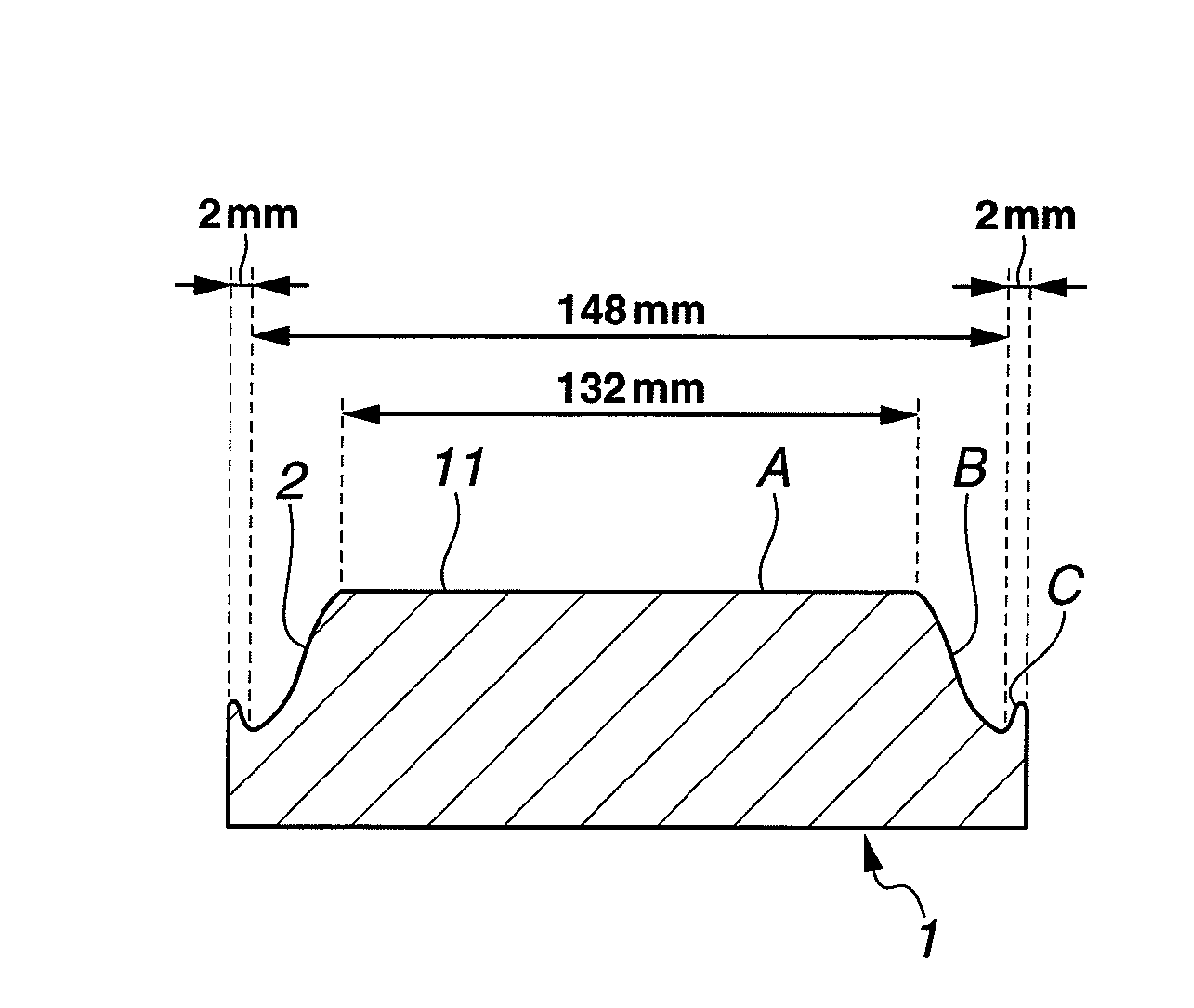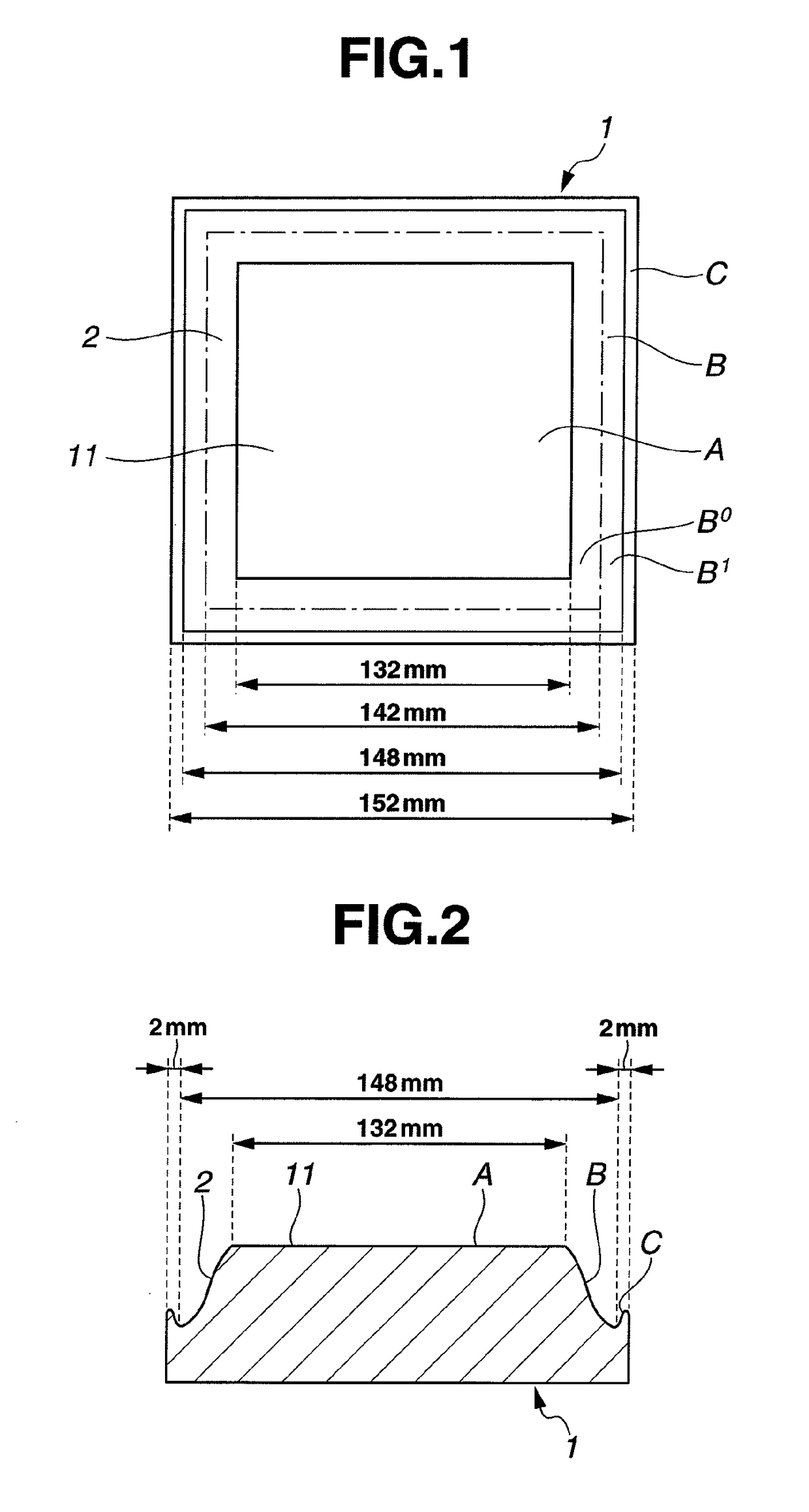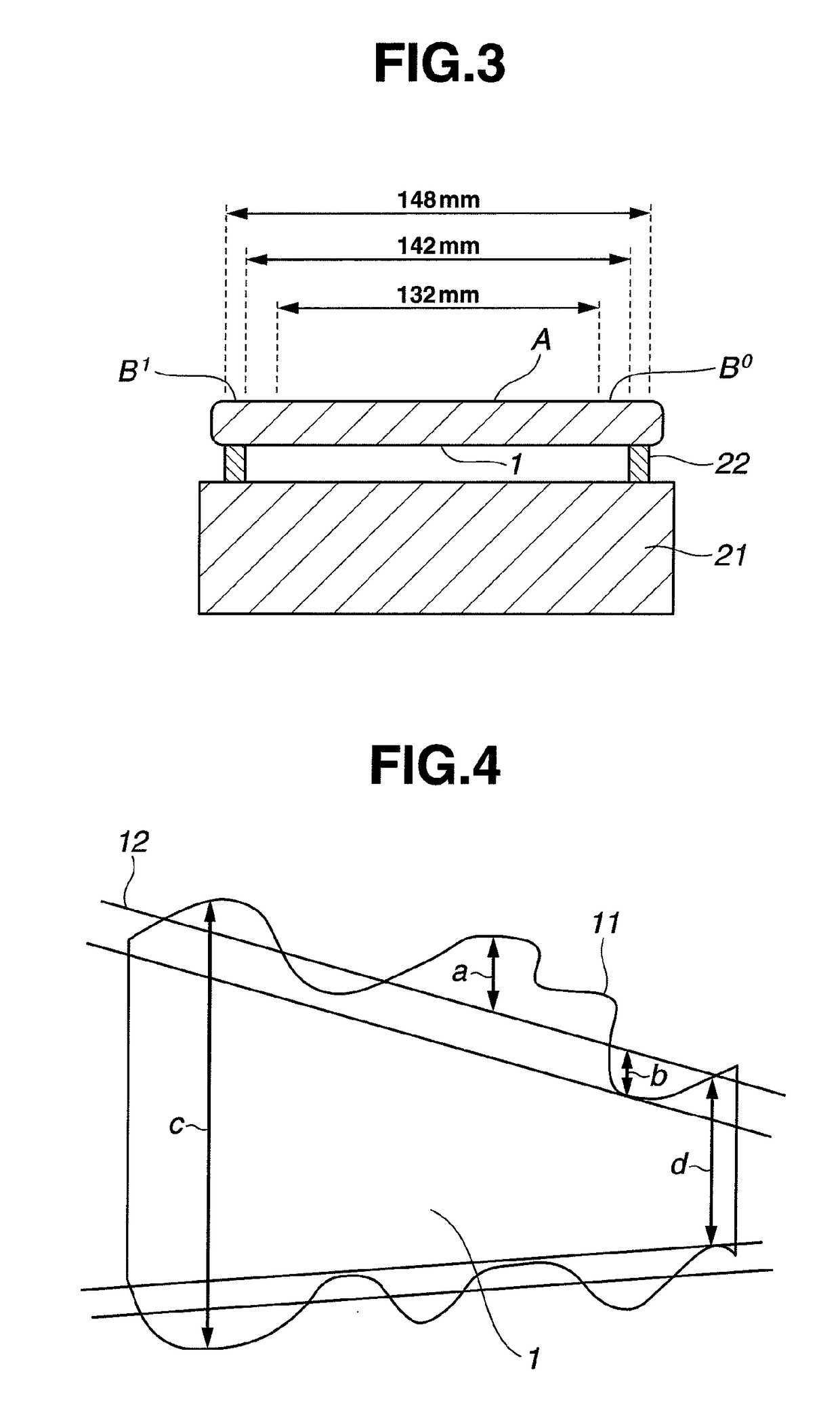Synthetic quartz glass substrate and making method
a technology of synthetic quartz glass and substrate, applied in the field of synthetic quartz glass substrate, can solve the problems of increasing processing cost and time, and increasing processing cost and time, and achieves the effects of low defect density, minimal roughness, and high flatness
- Summary
- Abstract
- Description
- Claims
- Application Information
AI Technical Summary
Benefits of technology
Problems solved by technology
Method used
Image
Examples
example 1
[0054]A synthetic quartz glass ingot was sliced into a glass substrate stock of 6 inches square, which was lapped by a double-side lapping machine of planetary motion and then roughly polished by a double-side polishing machine of planetary motion, yielding a starting substrate. The starting substrate had a flatness of 0.398 μm in an area of 6 inches square. Note that the flatness was measured by UltraFlat® M200 (Corning Tropel Corp.).
[0055]Thereafter, the substrate was set in a partial polishing machine equipped with a felt buff tool of cannonball shape having a diameter of 20 mm and a length of 25 mm as the polishing section (F3620 by Nihon Seimitsu Kikai Kosaku Co., Ltd.). The machining tool was operated under conditions: a rotational speed of 5,000 rpm and a machining pressure of 160 g / mm2, and traversed over the workpiece to polish the entire substrate surface. The abrasive slurry used was a colloidal silica water dispersion. The processing procedure included continuously movin...
example 2
[0059]The procedure of Example 1 was generally followed. A synthetic quartz glass ingot doped with 7.0 wt % of TiO2 was sliced into a glass substrate stock of 6 inches square, which was roughly polished, yielding a starting substrate. The starting substrate had a flatness of 0.371 μm in an area of 6 inches square.
[0060]The processing conditions for subsequent partial polishing included a machining tool rotational speed of 6,000 rpm and a machining pressure of 160 g / mm2, the machining tool was traversed over the workpiece to polish the entire substrate surface. The abrasive slurry used was a colloidal silica water dispersion. The processing procedure included continuously moving the machining tool parallel to X axis of the substrate, and moving the tool at a pitch of 0.25 mm in the Y axis direction. Under these conditions, an optimum processing rate of 1.1 μm / min was set based on the previous measurement. The moving speed of the machining tool was set to 50 mm / sec at the lowest subst...
example 3
[0064]The procedure of Example 1 was generally followed. A synthetic quartz glass ingot was sliced into a glass substrate stock of 6 inches square, which was roughly polished, yielding a starting substrate. The starting substrate had a flatness of 0.303 μm in an area of 6 inches square.
[0065]The processing conditions for subsequent partial polishing included a machining tool rotational speed of 3,000 rpm and a machining pressure of 160 g / mm2, the machining tool was traversed over the workpiece to polish the entire substrate surface. The abrasive slurry used was a colloidal silica water dispersion. The processing procedure included continuously moving the machining tool parallel to X axis of the substrate, and moving the tool at a pitch of 0.25 mm in the Y axis direction. Under these conditions, an optimum processing rate of 1.9 μm / min was set based on the previous measurement. The moving speed of the machining tool was set to 50 mm / sec at the lowest substrate portion in the substrat...
PUM
| Property | Measurement | Unit |
|---|---|---|
| flatness | aaaaa | aaaaa |
| flatness | aaaaa | aaaaa |
| flatness | aaaaa | aaaaa |
Abstract
Description
Claims
Application Information
 Login to View More
Login to View More - Generate Ideas
- Intellectual Property
- Life Sciences
- Materials
- Tech Scout
- Unparalleled Data Quality
- Higher Quality Content
- 60% Fewer Hallucinations
Browse by: Latest US Patents, China's latest patents, Technical Efficacy Thesaurus, Application Domain, Technology Topic, Popular Technical Reports.
© 2025 PatSnap. All rights reserved.Legal|Privacy policy|Modern Slavery Act Transparency Statement|Sitemap|About US| Contact US: help@patsnap.com



